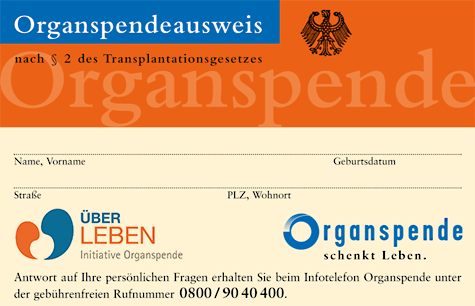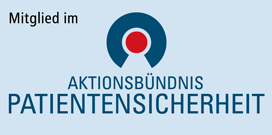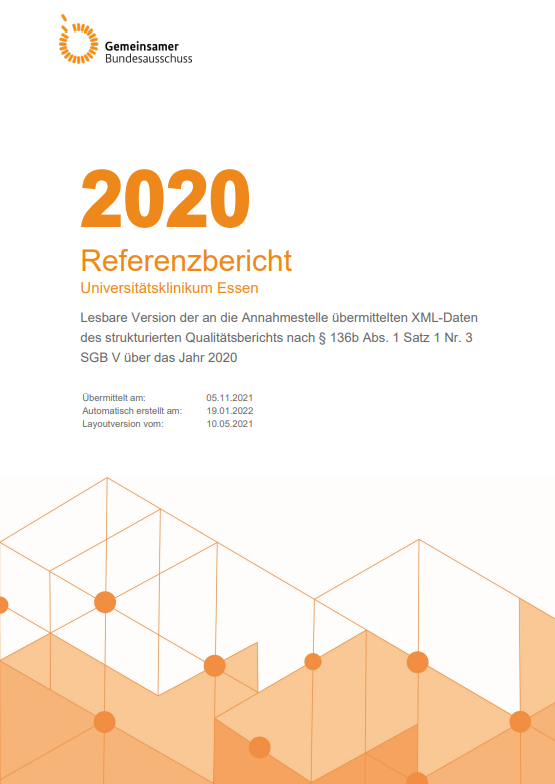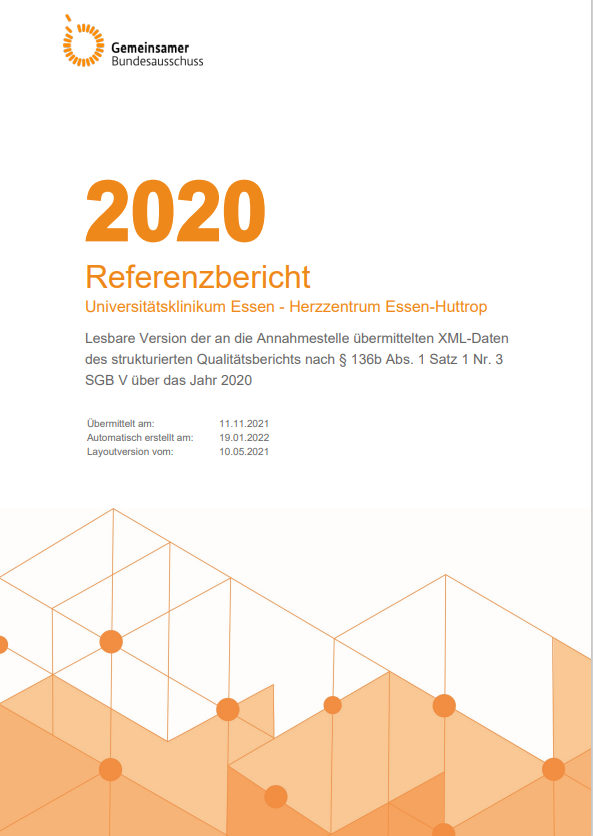Publikationen Dr. Yuan Zhu
Originalarbeiten
| ||
1. | Pierscianek D, Wolf S, Keyvani K, El Hindy N, Stein KP, Sandalcioglu IE, Sure U, Mueller O, Zhu Y. Study of angiogenic signaling pathways in hemangioblastoma. Neuropathology. 2016; doi: 10.1111/neup.12316. [Epub ahead of print]
| |
2. | Dammann P, Wrede K, Jabbarli R, Neuschulte S, Menzler K, Zhu Y, Özkan N, Müller O, Forsting M, Rosenow F, Sure U. Outcome after conservative management or surgical treatment for new-onset epilepsy in cerebral cavernous malformation. J Neurosurg. 2016 Jul 1:1-9. [Epub ahead of print]
| |
3. | Dammann P, Wrede K, Zhu Y, Matsushige T, Maderwald S, Umutlu L, Quick HH, Hehr U, Rath M, Ladd ME, Felbor U, Sure U. Correlation of the venous angioarchitecture of multiple cerebral cavernous malformations with familial or sporadic disease: a susceptibility-weighted imaging study with 7-Tesla MRI. J Neurosurg. 2016 May 6:1-9. [Epub ahead of print]
| |
4. | Pierscianek D, Michel A, Hindy NE, Keyvani K, Dammann P, Oezkan N, Mueller O, Sure U, Zhu Y. Activation of multiple angiogenic signaling pathways in hemangiopericytoma. Brain Tumor Pathol. 2016;33(3):200-8. doi: 10.1007/s10014-016-0256-6
| |
5. | Dammann P, Jabbarli R, Wittek P, Darkwah Oppong M, Kneist A, Zhu Y, Wrede K, Müller O, Forsting M, Sure U. Solitary sporadic cerebral cavernous malformations (CCM)- Risk factors of first or recurrent symptomatic hemorrhage and associated functional impairment. World Neurosurg. 2016; pii: S1878-8750(16)30007-9
| |
6. | Lambertz N, El Hindy N, Kreitschmann-Andermahr I, Stein KP, Dammann P, Oezkan N, Mueller O, Sure U, Zhu Y. Downregulation of programmed cell death 10 is associated with tumor cell proliferation, hyperangiogenesis and peritumoral edema in human glioblastoma. BMC Cancer. 2015 Oct 21;15:759. doi: 10.1186/s12885-015-1709-8.
| |
7. |
| Zhu Y, Zhao K, Prinz A, Keyvani K, Lambertz N, Kreitschmann-Andermahr I, Lei T, Sure U. Loss of endothelial programmed cell death 10 activates glioblastoma cells and promotes tumor growth. Neuro Oncol. 2015; doi: 10.1093/neuonc/nov155 [Epub 2015 Aug 8]
|
8. |
Renz M, Otten C, Faurobert E, Rudolph F, Zhu Y, Boulday G, Duchene J, Mickoleit M, Dietrich AC, Ramspacher C, Steed E, Manet-Dupé S, Benz A, Hassel D, Vermot J, Huisken J, Tournier-Lasserve E, Felbor U, Sure U, Albiges-Rizo C, Abdelilah-Seyfried S. Regulation of β1 Integrin-Klf2-Mediated Angiogenesis by CCM Proteins. Dev Cell. 2015; 26;32:181-90.
| |
9. | Stein KP, Wanke I, Forsting M, Zhu Y, Moldovan AS, Dammann P, Sandalcioglu IE, Sure U. Associated aneurysms in supratentorial arteriovenous malformations: impact of aneurysm size on haemorrhage. Cerebrovasc Dis. 2015;39:122-9.
| |
10. |
Stein KP, Wanke I, Schlamann M, Dammann P, Moldovan AS, Zhu Y, Sure U, Sandalcioglu IE. Posterior fossa arterio-venous malformations: current multimodal treatment strategies and results. Neurosurg Rev. 2014;37:619-28.2014
| |
11. | El Hindy N, Keyvani K, Pagenstecher A, Dammann P, Sandalcioglu I-E, Sure U, Zhu Y Implications of DLL4-Notch signalling activation in primary glioblastoma multiforme. Neuro-Oncology 2013;15:1366-78.
| |
12. | You C, Sandalcioglua I-E, Dammann P, Felbor U, Sure U, Zhu Y Loss of CCM3 impairs DLL4-Notch signalling: implication in endothelial angiogenesis and in inherited cerebral cavernous malformations. J Cellular Mol Med 2013;17:407-18.
| |
13. | Dammann P, Hehr U, Weidensee S, Zhu Y, Gerlach R, Sure U Two-hit mechanism in cerebral cavernous malformation? A case of monozygotic twins with a CCM1/KRIT1 germline mutation Neurosurg Rev 2013;36(3):483-6.
| |
14. | El Hindy N, Bankfalvi A, Herring A, Adamzik M, Lambertz N, Zhu Y, Siffert W, Sure U, Sandalcioglu IE. (2013) Correlation of aquaporin-1 water channel protein expression with tumor angiogenesis in human astrocytoma. Anticancer Res. 33: 609-13.
| |
15. | Dammann P, Wrede KH, Maderwald S, El Hindy N, Mueller O, Chen B, Zhu Y, Hütter BO, Ladd ME, Schlamann M, Sandalcioglu IE, Sure U. (2013) The venous angioarchitecture of sporadic cerebral cavernous malformations: a susceptibility weighted imaging study at 7 T MRI. J Neurol Neurosurg Psychiatry. 2013; 84:194-200.
| |
16. | El Hindy N, Rump K, Lambertz N, Zhu Y, Frey UH, Bankfalvi A, Siffert W, Sure U, Peters J, Adamzik M, Sandalcioglu IE. The functional Aquaporin 1 -783G/C-polymorphism is associated with survival in patients with glioblastoma multiforme. J Surg Oncol. 2013;108(7):492-8.
| |
17. |
| Zhu Y, Wu Q, Fass M, Xu J F, Müller O, Sandalcioglu I. E., Zhang J. M., Sure U. (2011) In vitro charicterization of the angiogenic behavior of the endothelia derived from sporadic cerebral cavernous malformations (CCMs). Neurosurgery 69:722-32.
|
18. |
| El Hindy N, Lambertz N, Bachmann HS, Frey UH, Adamzik M, Zhu Y, Sure U, Siffert W, Sandalcioglu IE. (2011) Role of the GNAS1 T393C polymorphism in patients with glioblastoma multiforme. J Clin Neurosci. 18:1495-14999.
|
19. |
| El Hindy N, Bachmann HS, Lambertz N, Adamzik M, Nückel H, Worm K, Zhu Y, Sure U, Siffert W, Sandalcioglu IE. (2011) Association of the CC genotype of the regulatory BCL2 promoter polymorphism (-938C>A) with better 2-year survival in patients with glioblastoma multiforme. J Neurosurg. 114(6):1631-9.
|
20. |
| Zhu Y, Wu Q, Xu J F, Miller D, Sandalcioglu I. E. Zhang J. M., Sure U. (2010) Differential angiogenesis function of CCM2 and CCM3 in cerebral cavernous malformations. Neurosurgical Focus 29 (3): E1
|
21. |
| Wüstehube J, Bartol A, Liebler S.S., Brütsch R, Zhu Y, Felbor U, Sure U, Augustin H. G., Fischer A (2010) The cerebral cavernous malformation protein CCM1 inhibits sprouting angiogenesis by activating DELTA-NOTCH signaling. PNAS 107: 12640-12645
|
22. |
| Sandrrogoci I. E., Asgari S, Wend D, Johannes AP, Nes J, Dumitru CA, Zhu Y, Gizewski ER, Stolke D, Sure U. (2010) Proliferation activity is significantly elevated in partially embolized cerebral arteriovenous malformations. Cerebrovascular Dis. 30: 396-401
|
23. |
| Dammer P, Barth, Zhu Y, Maderwald S, Schlamann M, Ladd ME, Sure U (2010) Susceptibility-weighted MRI of cerebral cavernous malformations – prospects, drawbacks and first experience at ultra-high field-strength (7 Tesla) MRI. Neurosurgical Focus 29 (3): E5
|
24. |
| Zhu Y, Peters C, Hallier-Neelsen, M, Miller D, Pagenstecher A, Bertalanffy H, Sure U. (2009) PTEN in cerebral cavernous malformation: A potential role in pathological angiogenesis. J Neurosurgery 110:530-539.
|
25. |
| Zhu Y, Wloch A, Wu Q, Pagenstecher A, Bertalanffy H, Sure U. (2009) Involvment of PTEN promoter methylation in cerebral cavernous malformations. Stroke 40:820-826
|
26. |
| Wang LF, Fokas E, Bieker M, Rose F, Rexin P, Zhu Y, Pagenstecher A, Engenhart-Cabillic R, An HX. (2008) Increased expression of EphA2 correlates with adverse outcome in primary and recurrent glioblastoma multiforme patients. Oncol Rep 19:151-156.
|
27. |
| Zhu Y, Hoell P, Ahlemeyer B, Sure U, Bertalanffy H, Krieglstein J. (2007) Implication of PTEN in the production of reactive oxygen species and neuronal death in in vitro models of stroke and Parkinson’s disease. Neurochem Int 50: 507-516
|
28. |
| Zhu Y, Hoell P, Ahlemeyer B, Krieglstein J (2006) PTEN: a crucial mediator of mitochondria-dependent apoptosis. Apoptosis 11:197-207
|
29. |
| Tirakotai W, Freman S, Soerensen N, Roggendorf W, Siegel AM, Mennel HD, Zhu Y, Bertalanffy H, Sure U. (2006) Biological activity of pediatric cerebral cavernomas. An immunohistochemical study of 28 patients. Childs Nervous System 22:685-691
|
30. |
| Zhu Y, Schwarz S, Ahlemeyer B, Grzeschik S, Klumpp S, Krieglstein J (2005) Oleic acid causes apoptosis and dephosphorylates Bad. Neurochem Int 46: 127-135.
|
31. |
| Hufnagel B, Dworak M, Soufi M, Mester Z, Zhu Y, Schäfer J, Klumpp S, Krieglstein J. (2005) Unsaturated free fatty acids isolated from human lipoproteins activate protein phosphatase type 2C and induce apoptosis in endothelial cells. Atherosclerosis 180: 245-254.
|
32. |
| Zhu W, Mao Y, Zhao Y, Zhou LF, Wang Y, Zhu JH, Zhu Y, Yang GY. (2005) Transplantation of vascular endothelial growth factor-transfected neural stem cells into the rat brain provides neuroprotection after transient focal cerebral ischemia. Neurosurgery 57: 325-333.
|
33. |
| Zhu Y, Culmsee C, Klumpp S, Krieglstein J (2004) Neuroprotection by TGF-ß1 involves activation of NF-kB through PI3K/Akt and MAPK/Erk1,2 signalling pathways. Neuroscience 123: 897-906.
|
34. |
| Klumpp S, Mäurer A, Zhu Y, Aichele D, Pinna L.A, Krieglstein J (2004) Protein kinase CK2 phosphorylates Bad at threonine-117. Neurochem Int 45: 747-752.
|
35. |
| Ahlemeyer B, Kölker S, Zhu Y, Hoffmann GF, Krieglstein J (2003) Cytosine arabinofuranoside-induced activation of astrocytes increases the susceptibility of neurons to glutamate due to the release of soluble factors. Neurochem Int 42: 567-581.
|
36. |
| Zhu Y, Yang GY, Ahlemeyer B, Pang L, Che XM, Culmsee C, Klumpp S, Krieglstein J (2002) Transforming growth factor-beta 1 increases Bad phosphorylation and protects neurons against damage. J Neurosci 22: 3898-3909.
|
37. |
| Ahlemeyer B, Kölker S, Zhu Y, Hoffmann GF, Krieglstein J (2002) Increase in glutamate-induced neurotoxicity by activated astrocytes involves stimulation of protein kinase C. J Neurochem 82: 504-515.
|
38. |
| Zhu Y, Culmsee C, Roth-Eichhorn S, Krieglstein J (2001) ß2-adrenoceptor stimulation enhances latent TGF-ß1 binding protein-1 and transforming growth factor-beta1 in rat hippocampus after transient forebrain ischemia. Neuroscience 107:593-602.
|
39. |
| Culmsee C, Zhu Y, Krieglstein J, Mattson MP (2001) Evidence for the involvement of Par-4 in ischemic neuron cell death. J Cereb Blood Flow Metab 21: 334-343
|
40. |
| Zhu Y, Ahlemeyer B, Bauerbach E, Krieglstein J (2001) TGF-ß1 prevents neuronal apoptosis in rat hippocampal cultures involving inhibition of caspase-3 activation. Neurochem Int 38: 227-235
|
41. |
| Zhu Y, Roth-Eichhorn S, Braun N, Culmsee C, Rami A, Krieglstein J (2000) The expression of transforming growth factor-beta1 (TGF-ß1) in hippocampal neurons: A temporary upregulated protein level after transient forebrain ischemia in the rat. Brain Res 866: 286-298
|
42. |
| Schaper C, Zhu Y, Kouklei M, Culmsee C, Krieglstein J (2000) Stimulation of 5-HT1A receptors reduces apoptotsis after transient forebrain ischemia in the rat. Brain Res 883: 41-50.
|
43. |
| Zhu Y, Prehen JHM, Culmsee C, Krieglstein J (1999) The β2-adrenoceptor agonist clenbuterol modulates Bcl-2, Bcl-xl and Bax protein expression in a rat model of transient forebrain ischemia. Neuroscience 90: 1255-1263.
|
44. |
| Zhu Y, Culmsee C, Semkova I, Krieglstein J (1998) Stimulation of β2-adrenoceptors inhibits apoptosis in rat brain after transient forebrain ischemia. J Cereb Blood Flow Metab 18: 1032-1039.
|
45. |
| Braun N, Zhu Y, Krieglstein J, Culmsee C, Zimmermann H (1998) Upregulation of the enzyme chain hydrolyzing extracellular ATP after transient forebrain ischemia in the rat. J Neurosci 8: 4891-4900.
|
Review | ||
1. | Sure U, Zhu Y (2010) Cavernous malformations of brain and spinal cord. Neurosurgical Rev 33:255
| |
2. |
| Zhu Y, Culmsee C, Klumpp S, Krieglstein J (2004) Activation of NF-kB by TGF-ß1 through PI3K/Akt and MAPK/Erk1,2 signalling pathways. In: Pharmacology of Cerebral Ischemia (Krieglstein J and Klumpp S eds.), Stuttgart, Medpharm Scientific Publishers, pp397-405
|
3. |
| Krieglstein J, Selke D, Zhu Y, Klumpp S (2004) The role of protein phosphatases type 2C in neuronal apoptosis. In: Maturation Phenomenon in Cerebral Ischemia, Vol. 5 (Buchan AM et al., eds) Berlin Heidelberg: Springer-Verlag, pp 43-51
|
4. |
| Zhu Y, Krieglstein J (2003) Neuroprotection by drug-induced growth factors. International Congress Series 1799: 1-12´
|
5. |
| Zhu Y, Krieglstein J (2002) Mechanisms of Neuroprotection by TGF-β1. In: Pharmacology of Cerebral Ischemia (Krieglstein J and Klumpp S eds.), Stuttgart, Medpharm Scientific Publishers, pp363-371
|
6. |
| Krieglstein J, Zhu Y (2001) Upregulation of transforming growth factor-beta1 (TGF-ß1) expression in rat hippocampal neurons after transient forebrain ischemia and after ß2-adrenoceptor stimulation. In: Maturation Phenomenon in Cerebral Ischemia IV. (Bazan NG et al., eds.), Berlin, Springer-Verlag, pp 123-133
|
7. |
| Zhu Y, Krieglstein J (2000) Distribution pattern and upregulation of TGF-ß1 in rat brain after transient forebrain ischemia and after ß2-adrenoceptor stimulation. In: Pharmacology of Cerebral Ischemia (Krieglstein J, ed.), Stuttgart, Medpharm Scientific Publishers, pp 385-398
|
8. |
| Zhu Y, Krieglstein J (1999) ß2-Adrenoceptor agonist clenbuterol causes NGF expression and neuroprotection. CNS Drug Rev 5: 347-364.
|
9. |
| Culmsee C, Stumm RK, Zhu Y, Semkova I, Schäfer MKH, Weihe E, Krieglstein J (1998) Neuroprotection by drug-induced growth factors. In: Pharmacology of Cerebral Ischemia (Krieglstein J, ed.), Stuttgart, Medpharm Scientific Publishers, pp 333-348
|
10. |
| Braun N, Zhu Y, Krieglstein J, Culmsee C, Zimmermann H (1998) Upregulation of the enzyme involved in the extracellular catabolism of nucleotides following cerebral ischemia. In: Pharmacology of Cerebral Ischemia (Krieglstein J, ed.), Stuttgart, Medpharm Scientific Publishers, pp 51-61
|
11. |
| Krieglstein J, Culmsee C, Zhu Y, Semkova I (1998) Stimulation of β2-adrenoceptors induces NGF and inhibits apoptosis in rat brain after ischemia. In: Maturation Phenomenon in Cerebral Ischemia III. (Ito et al., eds.), Berlin, Springer-Verlag, pp77-86
|






















